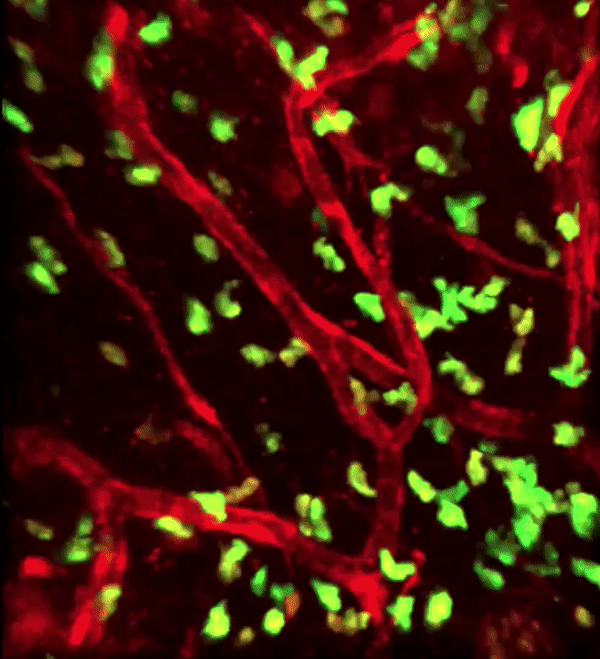
© Tim Lämmermann
Principles of self-organization in swarming neutrophils
Neutrophils are indispensable effector cells of our innate immune response and regulators of adaptive immunity. As classic phagocytic cells, they engulf pathogens, release lytic enzymes from their granules, produce reactive oxygen species and are hence pivotal for clearing bacterial and fungal infections. Not only are neutrophils key cells for protecting the host from microbial invasion, but they also act as critical mediators of sterile inflammation in acute and chronic diseases. Upon local inflammation or infection, neutrophils undergo phases of highly directed and coordinated migration, followed by neutrophil accumulation at sites of tissue injury or infection, a process termed neutrophil „swarming“. Neutrophils have evolved as true sentinel cells for detecting sites of tissue damage, but the molecular guidance signals that control neutrophil swarming in vivo have long remained unclear.
By using intravital two-photon microscopy, we could define a multistep attraction cascade that guides neutrophils at sites of local sterile injury and identified key molecules controlling individual phases of the swarming response. One of our major findings revealed a critical role for intercellular communication among neutrophils mediated by the lipid leukotriene B4 (LTB4) of the swarming response, which acutely amplified local cell death events to enhance the radius of neutrophil recruitment within the tissue (Lämmermann et al., Nature 2013). Our previous work provided an initial molecular map for neutrophil swarm formation and novel insight into how neutrophils self-amplify their swarming response (Kienle & Lämmermann, Immunol Rev 2016; Glaser et al., Curr Opin Cell Biol 2021). Additionally, we also identified that autosignaling is also important for stopping the self-organized swarming behavior, finely tuning the balance of neutrophil chemotaxis and arrest to counteract bacterial growth in the tissue (Kienle et al., Science 2021). Ongoing work also explores the functional role of neutrophil swarms in the context of anaphylactic reactions. We have also started to combine in-vivo imaging and lab-on-a-chip techniques that promise unprecedented levels of detail of neutrophil swarming at the cellular and molecular level.

© Tim Lämmermann


